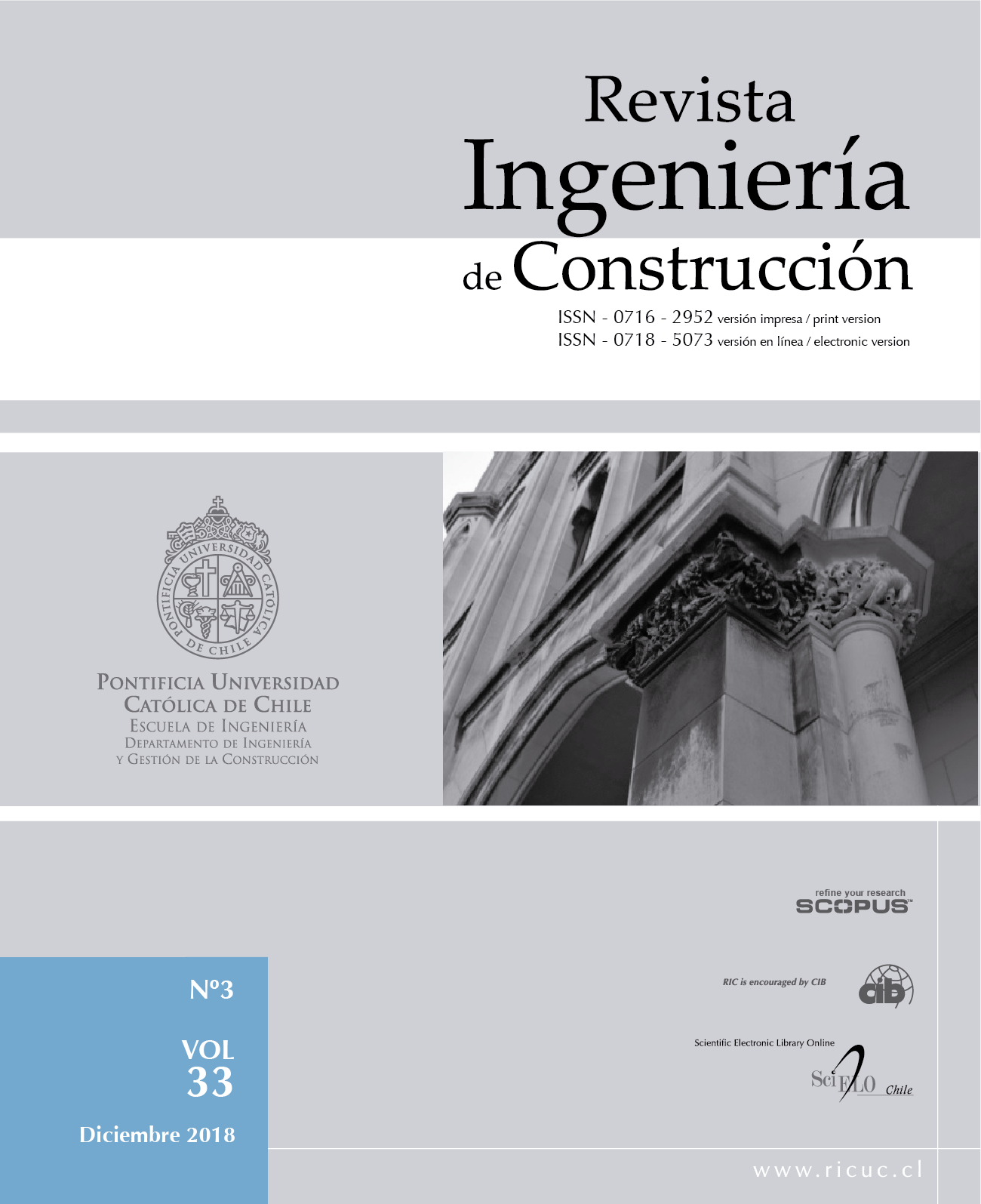Recycled rubber in the compressive strenght and bending of modified concrete with plasticizing admixtrue
DOI:
https://doi.org/10.4067/S0718-50732018000300241Keywords:
Rubber, concrete, resistance, compression, bendingAbstract
The use of concrete made with recycled materials allows an alternative in the optimization and considerable reduction of resources during the manufacturing process of the components. The resistance to compression and bending in concrete of 210 Kg/cm2 modified with plastifying additive at ages 7, 14 and 28 days were evaluated using recycled rubber of 5, 10 and 15% in its composition. Three experimental groups were included, with plastifying additive and recycled rubber, and two control groups, with and without plastifying additive. The resistance to compression reached maximum values of 218.45 Kg/cm2 and 212.33 Kg/cm2 at 5% and 10% rubber, respectively. As for the resistance to bending, a maximum value of 81.86 Kg/cm2 was achieved for 10% rubber. The recycled rubber proved to be an excellent addition to be used in concrete mixtures despite the losses of mechanical strength, but by adding plastifying additive, it significantly improves making it possible to be incorporated into concrete up to 10%. By means of variance analysis with significance of 5%, it is concluded that the percentage of recycled rubber has a significant effect on the resistance to compression and bending in the manufacture of modified concrete with plastifying additive.


